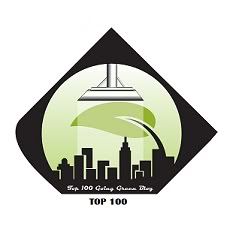


What is the monsoon?
The word "monsoon" is derived from the Arabic word "mausim" which means season. Ancient traders sailing in the Indian Ocean and adjoining Arabian Sea used it to describe a system of alternating winds which blow persistently from the northeast during the northern winter and from the opposite direction, the southwest, during the northern summer. Thus, the term monsoon actually refers solely to a seasonal wind shift, and not to precipitation. 
Even though the term monsoon was originally defined for the Indian subcontinent, monsoon circulations exist in other locations of the world as well, such as in Europe, Africa, and the west coasts of Chile and the United States. Arizona happens to be located in the area of the United States that experiences a monsoonal circulation. During the summer months, winds shift from a west or northwest direction to a south or southeasterly direction. This allows moisture from the Gulf of California and the Gulf of Mexico to stream into the state. This shift in the winds, or monsoonal circulation, produces a radical change in moisture conditions statewide. 

What causes this wind shift, or monsoon?
This change in wind direction is the result of two meteorological changes:
----the movement northward from winter to summer of the huge upper level subtropical high
pressure system, specifically known as the Bermuda High,
----the intense heating of the Mohave Desert creates rising air and surface low pressure, called a
thermal low.
These two features combine to create strong southerly flow over Arizona. The southerly low-level winds help to bring in moisture from Mexico, originally coming from a combination of moisture from the Gulf of Mexico, the Gulf of California, and the Pacific Ocean. When this moisture encounters the higher terrain of Arizona, it gets lifted and forms thunderstorms. These thunderstorms can contain very heavy rainfall, hail, strong gusty winds, or a combination of these conditions.
By the way, the term "monsoons" as typically used in the phrase "when the monsoons arrive...", or "we had some monsoons move through town last night..." is wrong. There is no such thing as monsoons. The word should be used the same way that the word "summer" is used. Thus, the proper terminology is "monsoon thunderstorms" not "monsoons". Remember, the monsoon is just a seasonal shift in wind direction, the thunderstorms occur because of the moisture moving over the state from the south.
What are the effects of the monsoon?
The months of May and June tend to be very dry and warm months over Arizona. By the end of June, however, afternoon clouds can be seen building over the higher terrain of northern Arizona, and by the beginning of July, the skies typically begin to release its store of moisture. Thus, the monsoon represents the second rainy season for Arizona, with the first rainy season occurring during the cooler months of November through April.
The monsoon circulation does not produce thunderstorms every day during the months of July-September, but rather occurs in a pattern that has what are known as "bursts" and "breaks". During the "bursts" (below, left), weak disturbances in the upper atmosphere act to focus thunderstorm activity over the state for a period of a few days to more than a week. Occasionally, however, the Bermuda high will become a bit stronger and develops over northwestern Mexico. This leads to "breaks" (below, right) in the monsoon, where the southerly winds decrease and the atmosphere becomes much less likely to allow thunderstorms to develop. This leads to a significant decrease in thunderstorm activity, and may last from a day or two to close to a week. This cycle of "bursts" and "breaks" will continue from the onset of the monsoon circulation (typically becoming established near the end of June or the beginning of July), until the time when cold fronts begin to move across the state of Arizona (typically during the month of September), which returns our winds to a westerly or northwesterly direction
Monday, June 29, 2009
The Monsoon
Posted by Meenu Khare at 11:03 AM 3 comments
Labels: beutiful sky, meenu khare, Monsoon, rains
Friday, June 26, 2009
The Google Story



" The google story" by David Wise is Quite an eyeopener on how Serjey and Larry managed to make their dreams into a $80 billion giant. The journey from the Stanford lab to the gates building to the garage to googleplex is worth a read.
****************
1)Google is a mis-spelt word. The original word is Googol which means 1 followed by 100 zeroes.
****************
2)Larry Page's brother Carl page also sold his internet company during the dot com era for an eye popping $500 million.
****************
3)Google's ad model was originally developed by a company named Overture ( Now a Yahoo company)
****************
4)From their original hostel at Stanford, Larry Page and Sergey Brin were shifted to a newly constructed building named William Gates building.
****************
5)Though a tech company Google followed the practices of media companies during its IPO. To protect itself from unwanted takeover threats the company issued class A and B types of shares. Valued similarly the two classes of shares differed only in their voting rights. The company also developed an auction based system of allotting its stake to prevent unwanted volatility just after listing.
****************
6)Google had lost the Amazon Europe ad deal to Yahoo. Larry and Serjey were traveling on their private jet when they got this news. With much persuation the founders arranged a secret meeting with Amazon's CEO. Google raised its bid to such a level that Yahoo was eventually forced to back out of the deal saying that it did not make business sense for the latter.
****************
7)Google's inhouse chef Charlie Ayers is one of the few chefs in the world who became a millionaire by selling personal Google shares given to him.
****************
8)Its very rare to find Kleiner Perkins and sequoia capital investing in the same venture. Larry and Sergie played a sleek game pitting the two VC'c against each other resulting in the two firms investing $12.5 million each.
****************
9)Google has a policy where employees are allowed to spend 20% of their time persuing their interests. Googlenews, Gmail and a host of other applications are a result of employee ideas which originated during this 20% time.
****************
10)Google has one of the largest hardware infrastructure and computing power in the world. This can be gauged from the fact that the company crawl the entire web and saves it in its computers. When a user searches for something, the google computers searches through the saved pages and throws out relevant results within seconds.
****************
Courtesy: http://www.thegooglestory.com
Posted by Meenu Khare at 12:00 AM 1 comments
Labels: Google, meenu khare, Science and Technology, The google story
Tuesday, June 23, 2009
Health Benefits Of Sauna






Sauna - what is it all about?
Sauna (a finnish word) means a room in which water is splashed on the hot rocks to produce steam (With evolving technology, sauna setup also has witnessed tremendous changes. Many new techniques are being developed and utilized to build new saunas; and to control the temperature inside). This steam is then used for its medical benefits in the form of Sauna bath. The temperature at which sauna bath should be taken is controlled by the participants.
Sauna bath opens the pores on skin and helps body to remove toxins and other impurities from within the body and blood. Sauna’s effect on human body shows unpredictable heart condition as the heart beats/pulse rate increases to almost double, causing blood circulation in the body increase towards the skin. In some people the blood pressure goes up and in some people it falls. However, a study carried out on health benefits of sauna by various health case institutes and magazines have stated that the sauna bath is safe for human health and does offer health benefits such as relaxation, weight loss and many more.
Sauna Health benefits
Sauna bath causes sweating & helps in opening skin pores. As we sweat more during sauna bath, it helps in excretion of body toxins and other impurities from the blood. People experience freshness in mood and health for longer time once they take sauna bath, as the body gets cleansed through sweating and muscles are relieved leading to the feeling of well-being. Sauna bath is also useful in joint pains as the warm steam helps blood flow resume effectively in all parts of the body and the contracted muscles are relieved.
It’s effectiveness in weight loss has been main reason people choose sauna bath over any other type of exercise. Sauna works positively on our metabolism and increases its speed and intensity, which in turn results in weight loss.
Regular sauna bath can also help mental and physical relaxation and release tension. People with sleep disorders such as insomnia and improper sleep condition can be benefited through sauna as it is very effective in inducing a good long relaxing sleep.
The heat generated during sauna bath helps our body in improving our immune system by increasing our body heat which simulates the fever condition. We also know about the medical properties of steam, which proves to be of great help in treating problems like cold (sinusitis), bronchitis, laryngitis etc.
15-20 minutes of sauna is almost equivalent to 1-2 hours of brisk walk or 1 hour of exercise. However, this effect can vary from person to person based on their physical condition.
For many people, sauna does not offer significant health benefits; in that case sauna can serve a purpose of leisure for them and not more than just a daily relaxation process and a way to preserve the glow on their face.
Caution
Pregnant women, heart patient with low or high blood pressure condition or suffering from any disease which has negative effect of sauna bath should first consult a physician regarding their physical condition and the length of period they can take sauna bath. It is always better to seek proper guidance from your physician before anyone is planning to try out sauna bath for any reason. People who consume alcohol or are undergoing some medication should first consult their physician before they try sauna.
Types of saunas
Infrared Sauna
Wet Sauna
Dry Sauna
Smoke Sauna
Steam Sauna
Posted by Meenu Khare at 12:00 AM 1 comments
Labels: Dry Sauna, Health Care, Infrared Sauna, Sauna, Smoke Sauna, Steam Sauna, weight reduction, Wet Sauna
Saturday, June 20, 2009
Facts about blood donation




* Person above 18 years of age and over 50 Kgs. in weight can donate blood once in three months.
* A normal adult has five to six liters of blood in his/her body of which only 300 ml is used during blood donation.
* This blood is replaced by your body within 24 to 48 hours!
* No special diet, rest or medicine is required after blood donation.
* The donor should not have taken any medicine in the last 48 hours.
* The donor should not have contacted jaundice in the previous three years.
* Every donor is given a medical checkup prior to donation to see if he/she is medically fit and doesn't suffer from anemia, high blood pressure etc.,
* The donor cannot contract HIV/AIDS by donating blood provided the syringe and associated apparatus are not HIV infected.
Posted by Meenu Khare at 12:00 AM 1 comments
Labels: blood donation, Inspiring Science, KNOWLEDGE, meenu khare
Tuesday, June 16, 2009
Equations



SSC + HSC + BTech + MBA = UNEMPLOYMENT
One Chinese gymnast = India's Gold Medal tally since 1896
Sushmita Sen - 1.2 feet = Salman Khan.
Special Effects in Shampoo ads = Special effects in Jurassic park.
4 weeks in Switzerland + London + New Zealand + Canada = a 4 minute song in Hindi movie.
Ajay Devgan + cosmetic surgery + acting ability + personality + own production company = Kajol..
Rona dhona x Bewafai x Badle ki aag = Your mum's favorite serials.
Amitabh Bachchan + Jaya Bachchan - Talent = Abhishek Bachchan
Any actor + Any actress + many movies = David Dhawan
1 smile + 32 teeth = Govinda
1 person - shirt = Salman Khan
1 person + straight hair + un-straight walk = Sanjay Dutt
1 hand + 10 kg weight = Sunny Deol
One engagement + Two weddings + Three wedding songs + Four hundred Relatives + A house bigger than Buckingham Palace = One Sooraj Barjataya Film
Reading mails all the time + no replies = Silence of the Lamb!
Software Engineer, Qualified Employee + No Work = Forwards
Posted by Meenu Khare at 12:00 AM 0 comments
Labels: entertaining, Equations, good laugh, Humor, meenu khare
Saturday, June 13, 2009
speedy Internet to developing world






Satellites to bring speedy Internet to developing world
---By Brett Cherry
People across the developing world could have high-speed Internet access by late 2010, thanks to a new global satellite system.
The system was announced by the Jersey-based O3b Networks, whose name stands for the 'other three billion' people in developing countries who don't have access to the Internet.
Their satellite-based infrastructure will bring Internet access to countries in Asia, Africa, Latin America and the Middle East.
Traditional communication satellites orbit the Earth at an altitude of around 22,000 miles, which can limit signal strength and bandwidth. O3b will use cheaper medium earth orbit (MEO) satellites with an altitude of around 6,000 miles, which will provide a stronger signal.
O3b has already begun production of the 16 satellites. Once operational, it will provide speeds of up to ten gigabits per second, comparable to Internet access speeds available in the developed world. As demand increases, more satellites will be launched, according to Greg Wyler, chief executive officer of O3b Networks.
High-speed Internet access will bring a series of advantages to developing countries, including locally generated content, widespread e-learning, telemedicine and other enablers of social and economic growth, he adds.
Wyler says the satellite-based network will have significant advantages over broadband systems that use expensive materials such as fibre optic cables, and could potentially reduce the cost of Internet access in developing countries ten-fold.
O3b say underwater fibre networks that currently form the 'backbone' of developing world communications are extremely limited in providing Internet access.
But one of the hurdles to cheap high-speed access is gaining government licensing and working with telecom monopolies. Alan Jackson, chief technical officer at Aptivate, a nongovernmental organisation that provides information technology services for international development, told SciDev.Net that access is not about finding a "techno-fix".
Jackson warns that satellite-based high speed Internet — compared to cable broadband — might not necessarily result in cheap, affordable connectivity for people in developing countries.
"Each telco [telephone company], which in several countries are effectively government-owned monopolies, effectively control the price … so you don't see this explosion of cheap Internet access for everyone … It requires a certain liberalisation of the telecom market."
O3b will deal with telecom companies in developing countries, who will then provide services to individual users.
Financial backers for the system are Google Inc., Liberty Global and HSBC who aim to tap into large, emerging markets in developing countries.
Posted by Meenu Khare at 12:00 AM 0 comments
Labels: communication satellites, O3b, Satellites, speedy Internet
Wednesday, June 10, 2009
Software Engineer's Daily Routine (good laugh)




Software Engineer's Daily Routine
8:30AM: wake up
8:45AM: Tough decision; to bath or not.
8:50AM: Have To.
9:15AM: Punch in.
9:20AM: Check Mail.
9:25AM: Check Again just in case...
9:30AM: Since It is already 9:30 wait for tea (9:45AM).
9:45AM: TEA party.
10:00AM: Check Mail.
10:05AM: Check again. Can't believe that no mail has come. Is every body dead or what?
10:20AM: Sudden feeling of loneliness and desperation turn around to look for some body (Any body) to talk to.
10:30AM: Found a guy testing something. Feel real pity for his pathetic, boring and useless existence.
10:40AM: Sudden urge to get some work done and fast. Start looking for the file.(Can't remember it's name)
11:00AM: Boss summons in his office. Bad sign.
11:30AM: How the hell! Am I supposed to remember everything? Why should I be responsible for everything that goes bad?
11:45AM: Try to locate a scapegoat. No body around.
12:00AM: Mood is really bad decided to postpone work till after lunch.
12:30AM: lunch
1:00PM: Lunch over.
1:10PM: Go for a smoke. Can't even smoke in this god forsaken place.
1:35PM: Back from a smoke. It was good. I even did not pay for the cig. The other chap is so foolish.
1:50PM: Mood is good. Decide to go to cool web sites.
2:30PM: Feeling real sleepy after such a mammoth mental effort.
2:45PM: Tea Time.
3:00PM: Chat and discuss with colleague on the bad state of the company. Blame everybody for incompetence and laziness
4:00PM: A guy from testing comes for help.(Jerk)
4:11PM: Try to look busy.
4:12PM: He is asking for a technical help.(Real jerk).
4:15PM: After really making him beg for help decide to take a look.
4:50PM: No solution found. Really angry on the guy for getting myself involved.
4:55PM: Suddenly boss is spotted in the neighboring area. Try making as much loud noise as possible with some obscure technical jargon thrown in.
5:00PM: Boss has gone back to his den. Coast is clear.
5:05PM: Blame the problem on RnD.
5:10PM: Check mail. "Yes" a mail has finally arrived.
5:13PM: It's a silly joke and old too. But it felt good.
5:14PM: a quick dash for gate.
5:15PM: Third in punching out.
5:25PM: Reached Room.
5:26PM: TV on. No worth while program.
8:30PM: Still no worth while program. Every body is getting lazy and irresponsible what will happen to this world GOD help us. Curse government and RnD.
8:45PM: Food arrives. Pretty bad and stinking.
8:48PM: Dinner finished.
12:45AM: Today there were really good programs.
1:46AM: Decide to sleep. Tough day ahead.
******
Posted by Meenu Khare at 12:00 PM 0 comments
Labels: good laugh, IT HUMOR, meenu khare, software engineer
Sunday, June 7, 2009
Save Green, Save Earth
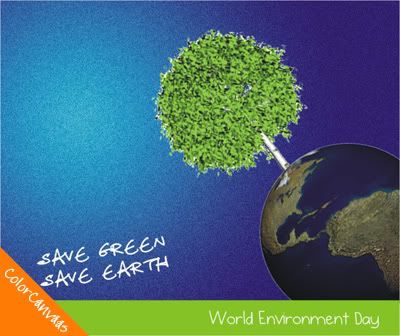
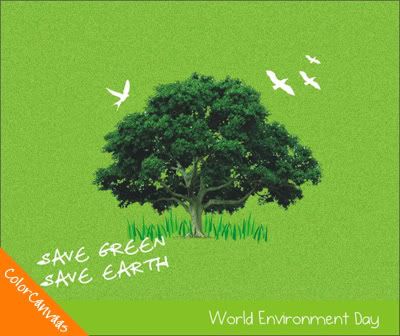
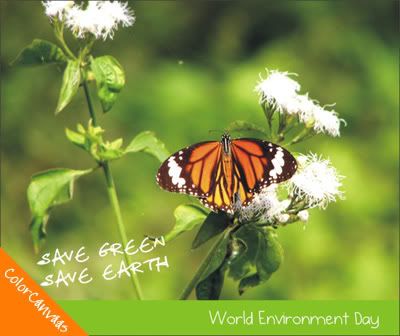
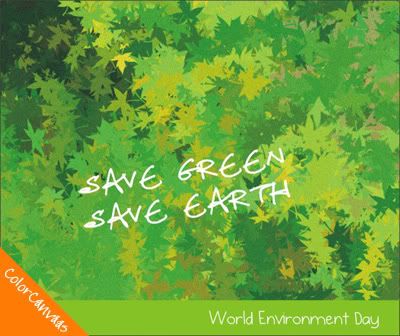
World Environment Day (WED) was established by the United Nations General Assembly in 1972. WED is hosted every year by a different city and commemorated with an international exposition through the week of June 5. The United Nations Environment Programme (UNEP), also created in 1972, uses WED to stimulate awareness of the environment and enhance political attention and public action.
Courtesy:http://www.colorcanvaas.com/
Posted by Meenu Khare at 3:24 PM 1 comments
Labels: Save Earth, Save Green, UNEP, World Environment Day
Thursday, June 4, 2009
HIV/AIDS: Knowledge is Power






HIV can never survive in any other liquid medium also other than blood or semen (& please for God sake ... never in Pani Puri wala pani)
************
Even if one drinks an HIV infected blood (or semen) of someone
(ingest through Gastro Intestinal track), the virus can not survive in the acidic pH of stomach. Highest extent of acidity is 0 (practically not possible) so imagine 1 as pH which is in our stomach. (This pH can burn
your own finger in less than a second if you dip in that acid).
************
Exposure of less than 1 second in AIR KILLS the HIV virus(hence story of needle pricks in Cinema theatres is a crap). Even if blood from a wound (of infected person) dries up (blood clot), the virus diesand can not infect anyone else
************
HIV transmission is ONLY an INFECTION i.e.entrance of virus in one's body. It DOES NOT MEAN AIDS.
************
An HIV-infected person (after entrance of virus) can progress to a condition of AIDS only after 8 to 10 YEARS (not in 15 days as in the Pani Puri story). In some cases the time span may be 20 yrs. too.
************
It is not HIV (virus) that kills a human .....the virus attacks immune cells (cells that fight against foreign pathogens/antigens)
and hence a person's ability to fight against infections & diseases slowly diminishes and person ultimately dies of a disease which could be as simple as TB
************
Most importantly, HIV is no longer a dreadful disease ... it is "CHRONIC MANAGEABLE DISEASE" just like Diabetes or Hypertension.
************
If there is anything you need to be careful from to prevent HIV is Unsafe sex, Blood transfusion (check before taking) /Blood donation (use sterilized needles only) and any blood contact during an accident or so where amount of bleeding is very high.
************
PLZ O PLZ spread this message to avoid rumors and to educate people.
************
Posted by Meenu Khare at 12:00 AM 2 comments
Labels: AWARENESS, HIV/AIDS, meenu khare, MISCNCEPTIONS, Science and Technology
Monday, June 1, 2009
Bio-char






What is bio-char?
Bio-char is bio-mass (wood, plants, plant waste) that has been converted to charcoal, but ... not for the purpose of burning it as a fuel, instead it is retained and used in other ways.
Volatile fluids and gasses are captured and used, whereas with traditional charcoal production these "go up in smoke"
Bio-char is produced by pyrolysis: heating in the absence of oxygen, which prevents burning of the biomass (which happens in open fires)
What use is it?
Bio-char, and its byproducts, has multiple uses
---When added to the soil it can significantly improve soil fertility (especially if
some volatiles are left or re-cycled back in)
---The volatile fluids and gasses produce usable bio-fuels, that can be produced on
a sustainable basis
---The carbon, when recycled into the soil, provides a stable long term removal
of carbon (dioxide) from the atmosphere. Removing carbon from the atmosphere is
called sequestration.
Isn't planting trees good enough?
Growing trees takes a long time
There is a finite limit to how much carbon an acre of forest can store
When trees die they decay and release carbon into the atmosphere via CO2 and methane
It is estimated that as little as 10% of the carbon captured by trees remains in the soil over the long term but if trees are coppiced, the harvested biomass can be used to produce a continual source of bio-char. Or if they are harvested for other purposes and the incidental waste is used as a feedstock for bio-char production (e.g. in forestry or sugar can production).
Biochar has been attracting growing interest due to its potential in carbon sequestration and in improving soil health. However, further research needs to be undertaken to answer questions about its properties and the benefits associated with its production and application.
This fact sheet explains what biochar is, the process by which it is produced (pyrolysis) and looks at the possible role of biochar as a soil conditioner and in offsetting greenhouse gas emissions.
The knowledge gaps and research questions which need to be addressed in relation to biochar's production and application are also discussed.
It advocates biochar as a strategy to:
•improve the Earth’s soils;
•help mitigate the anthropogenic greenhouse effect by reducing greenhouse gas emissions and sequestering atmospheric carbon in a stable soil carbon pool; and
•improve water quality by retaining agrochemicals.
•sustainable co-production of clean energy and other bio-based products as part of the biochar process;
•efficient biomass utilization in developing country agriculture; and
•cost-effective utilization of urban, agricultural and forest co products.
Posted by Meenu Khare at 12:00 AM 3 comments
Labels: agrochemicals, bio-char, biomass, Energy, entertaining, environmentally friendly technology, meenu khare, pyrolysis
